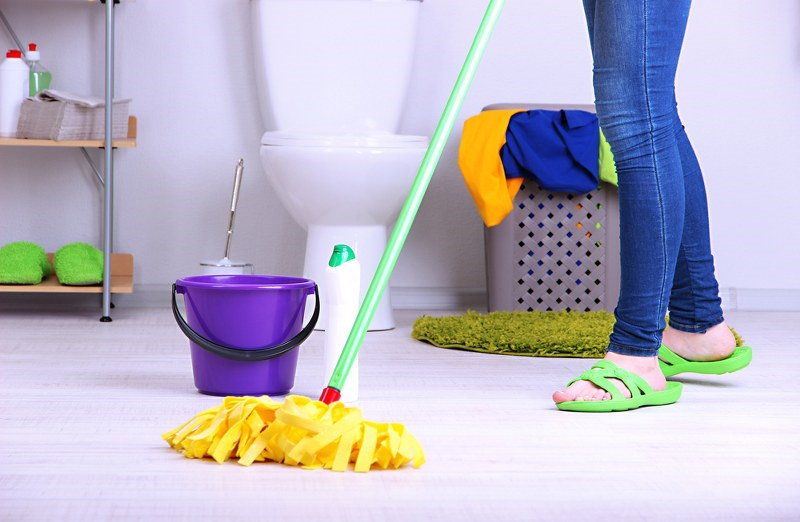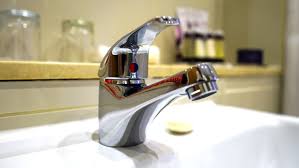
How To Clean Your Bathroom Effectively
Tips on how to clean a bathroom
The bathroom is one of the most utilised rooms in any property be it at work or in the home. The bathroom is also where most germs can live. So, for health reasons, it is important to keep your bathroom clean and maintain the cleanliness.
Have a plan and create a checklist of things to do. Implement your plan consistently on set dates. If you have kids offer them some play money.
Start at the Top
Get your broom and sweep around the ceiling and architraves to remove dust, spider webs and bugs. Work from the top down.
Fibreglass Showers and Glass Doors
These surfaces need special treatment. Clean them with a nonabrasive cleaner such as an all-purpose bathroom cleaner, pine oil or baking soda. Avoid abrasive cleansers or scrubbing pads because they may scratch or dull the finish.
Cloudy glass shower doors may be cleaned with full-strength white vinegar or a commercial lime and scale remover. Use good ventilation and protect skin and clothing when using these products.

Are your shower walls tiled?
You can either purchase cleaning products from the local supermarket or make your own. There are many cleaning agents in a supermarket and invariably you can find at least one that is on special. However, if you want to simply make your own cleanser here are a couple of suggestions.
Vinegar and dishwashing soap. Vinegar is a great substitute as a cleaning agent and disinfectant. Combine equal parts of dishwashing soap with vinegar into a spray bottle. Now you have a potent shower cleanser. Spray the shower walls and let it sit for 5 minutes or so. After the wait, you can scrub away all the grime and buildup.
Vinegar and baking soda. This combination makes a great drain cleaner and can also be used on your shower walls and floor. When these two agents are combined it produces a fizzy sound and becomes an effective cleaner.
Add a tiny bit of water with baking soda. Mix together to create a paste. Find a clean cloth and apply and scrub the solution to the walls. Then spray vinegar on the mixture, watch it bubble and clean the walls. When the bubbling action stops, scrub again and rinse thoroughly.
Soap scum, bath oil, hair products and body soil combine forces to assault the shining surface of the shower and tub, while tub rims, fixtures and faucets provide hiding places for moisture, mould and mildew. Put the job off and deposits harden and ossify, and mildew and mould take up residence in dark corners. Harness time and cleaning power to make short work of cleaning the shower and tub.
Basins and Sinks
The usual suspects in most basins are hair, soap and toothpaste residue. This is another area that should be kept clean at all times. After all, it is a nice feeling when you use a bathroom basin and it looks shiny and new.
Right for the job. Use all-purpose bathroom cleaner to remove light soil and film. For more hardened deposits, abrasive or soft-scrub cleaners may be used, as they will be easy to rinse from ceramic surfaces. Cleaners formulated with bleach will remove toothpaste dribbles and sanitize surfaces, too. Keep bathroom cleaning green by using homemade cleaners. They’ll make your bathroom sparkle and shine without harsh chemicals — or a harsh price tag.
On the edge. Clean the rim and fixtures with a disinfecting spray glass cleaner or all-purpose bathroom cleaner. Buff fixtures shiny and dry with a fresh cleaning cloth.
Toilet Cleaning
Now we are getting to the final stage. The toilet. This isn’t everyone’s favourite chore. But it is necessary that the toilet is free of germs.
Purchase recommended toilet cleansers. Generally, people will use a liquid cleaner that they cover the entire interior of the toilet bowl. Typically this is the preferred method that allows the formula to do its job without much effort. However, prior to adding the liquid cleaner use your scrubbing brush first and scrub inside the rim of the toilet. Then flush the toilet and coat with your liquid cleanser. Always clean the brush thoroughly after use and replace it when the bristles start to lose their shape.
If the toilet has not been cleaned in a while it can develop a ring that is hard to remove with a liquid cleaner. Try using a pumice stone and rub directly onto the affected area.
The final touches. Disinfect the toilet, seat, lid and tank. You can use an all-purpose cleaner to spray onto these areas. Let the solution stand after spraying for a few minutes then wipe with a clean cloth.
Related article – Preparing your property for rent


